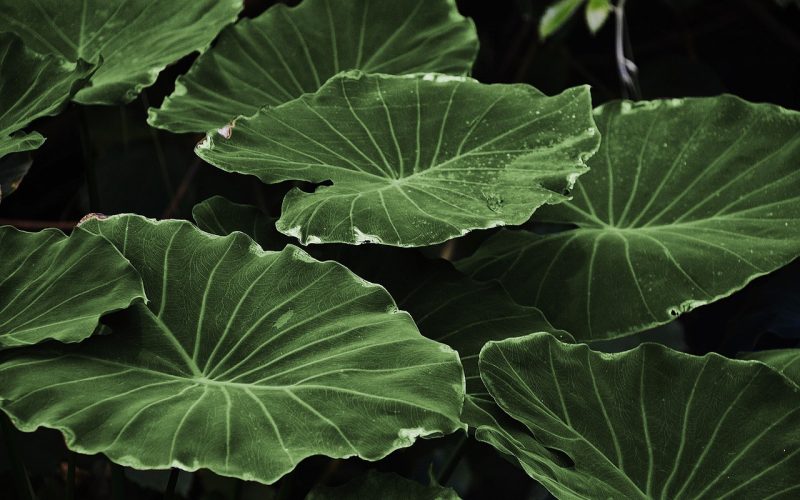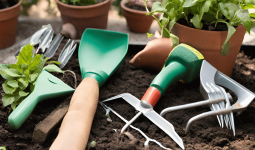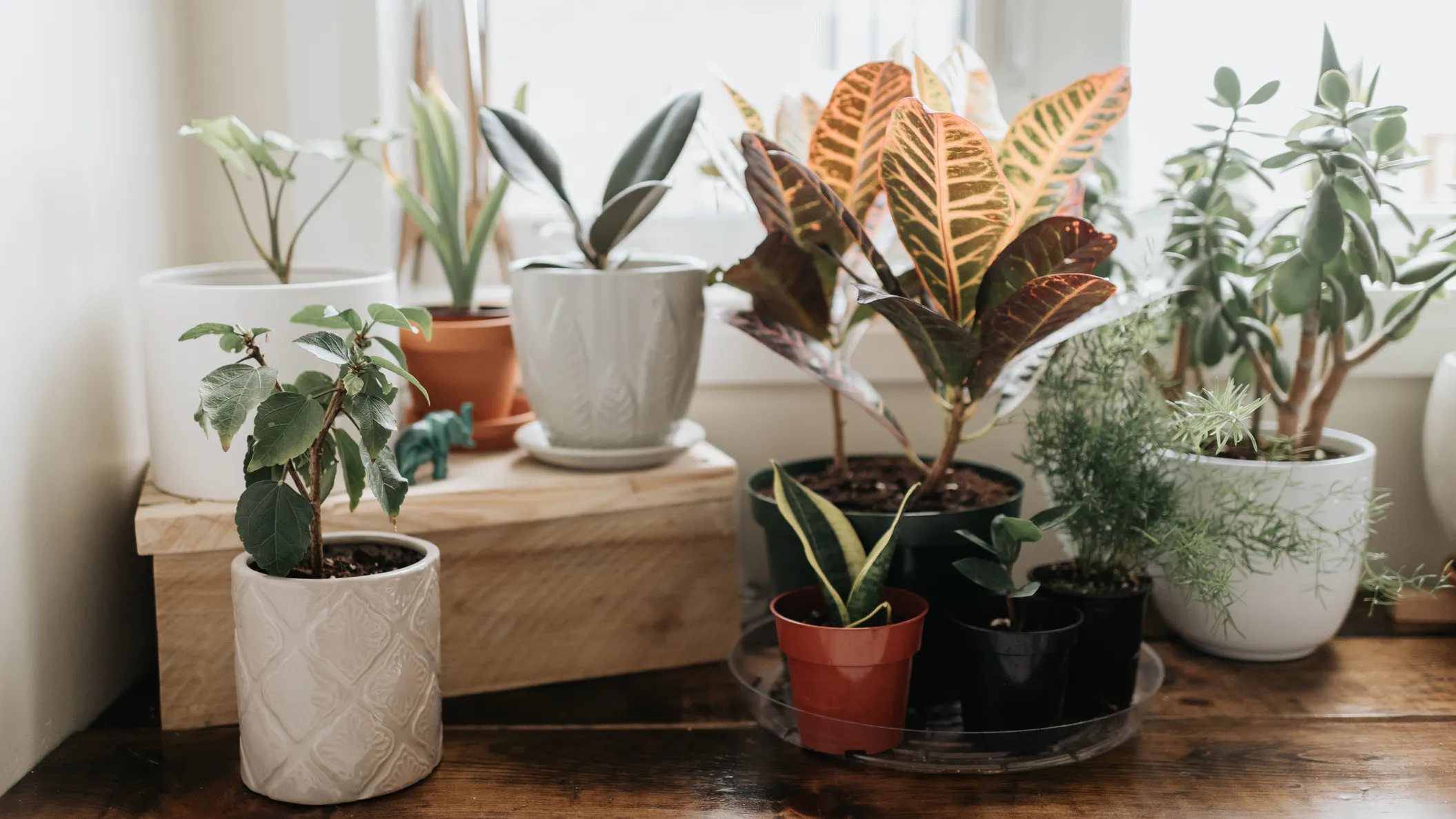Africa is home to a diverse range of plant species. The deserts, forests, grassland, thickets, and savannas support different plant species.
In addition, the continent has large differences in temperature, rainfall, topography, and soil types, which create diverse ecosystems for African plants.
As many of these plant species are beneficial, some can be considered dangerous due to their toxic or unsafe properties.
Africa is also home to many poisonous plants that can endanger humans and livestock.
In this article, look at a few examples of dangerous plants in Africa.
Dangerous Plants in Africa
1. Castor Bean

This plant is native to Africa and contains a highly toxic compound known as ricin in its seeds. It is the first example of dangerous plants in Africa we will look at.
The castor bean is a large plant of the spurge family (Euphorbiaceae).
Although it is commercially grown in other countries like India, Brazil, and China for pharmaceutical and industrial use of its oil and landscaping, seed consumption can be lethal.
The plants reach 10 to 13 meters (30 to 40 feet) in the tropics. In temperate climates, they are grown as annuals that grow up to 1.5–2.5 meters (4.9–8 ft) in one season.
The plants have beautiful giant 12-lobed (fan-shaped) palmate leaves.
The bronze to red fruit clusters with spiky spines are attractive but are often removed before ripening due to the concentration of ricin in their stippled, bean-shaped seeds.
Ricin is one of the most potent plant toxins known. It can cause severe illness or even death if ingested or injected.
This is why in Africa, plants like this are rare and avoided.
2. African Poisonwood
Another of the most dangerous plants in Africa. They are found in tropical regions of Africa; this tree contains a milky sap that can cause severe skin irritation and blistering upon contact.
Poisonwood is a member of the cashew family, which also includes poison sumac, poison oak, poison ivy, and, perhaps surprisingly, mango.
All parts of the tree contain a resin called urushiol, which can cause skin rashes and mucous membrane irritation in humans.
It is so potent that people have even been affected by water dripping from poisonwood leaves and inhaling smoke from burning poisonwood parts.
In some cases, the sap can also cause temporary blindness if it gets into the eyes.
3. Devil’s Claw

Devil’s Claw is a plant native to the Kalahari Desert and other regions of Southern Africa. The plant gets its name from the tiny fangs that cover its fruit.
Historically, Devil’s Claw has been used to treat pain, liver and kidney problems, fever, and malaria.
It was also used in ointments to treat wounds, ulcers, and other skin problems.
While it has medicinal uses for its anti-inflammatory properties, the plant has sharp, hook-like fruit pods, just like its name says. They can cause injury if handled without caution.
4. Strychnine Tree
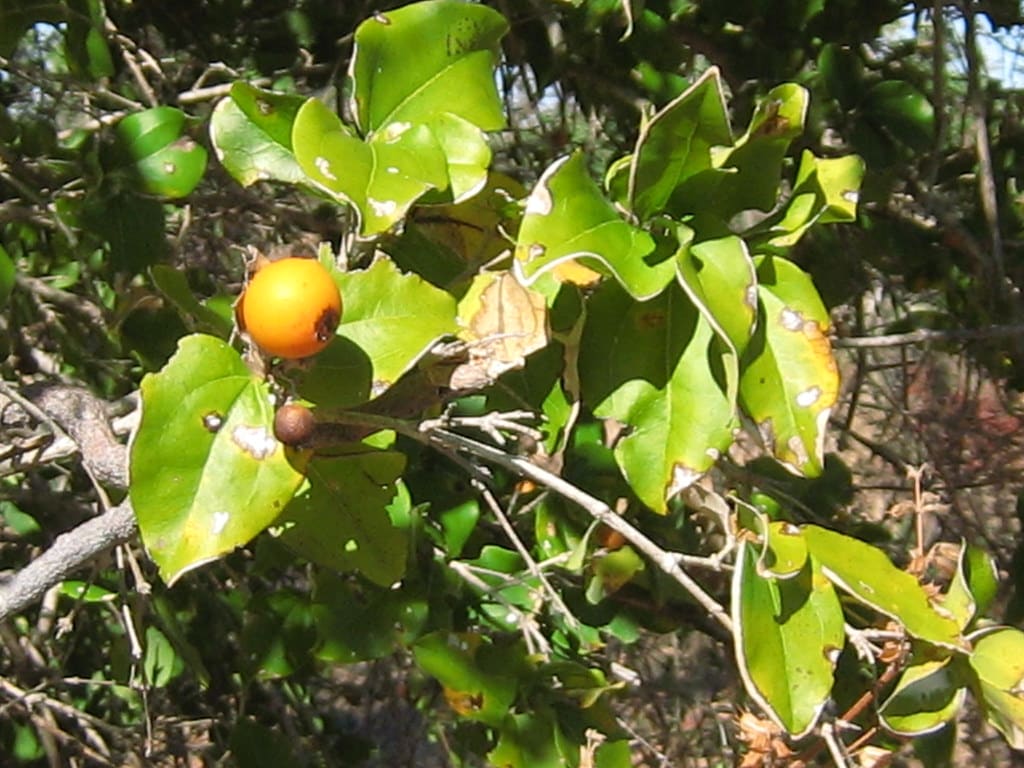
Several species of Strychnos, including S. nux-vomica and S. toxifera, are found in Africa.
The toxic derivatives of the tree are the seeds and the bark. However, poisonous alkaloids can be found throughout the plant.
The toxic compounds are strychnine, brucine, and loganine. The lethal dose for adults is 30-120mg.
Ingestion of the plant can lead to muscle spasms, convulsions, and potentially fatal respiratory failure.
Strychnine poisoning occurs accidentally after consuming herbal and household medicinal preparations and as a parasite of illicit drugs or as intentional self-harm with the consumption of rodenticides or the direct consumption of the nuts and bark of the nux-vomica tree.
5. African Death Lily
Also known as the Voodoo Lilies, these dangerous plants in Africa are found in the northern region of Africa.
Its large, foul-smelling flowers can produce toxic compounds that may cause severe stomach and intestinal distress if ingested.
6. African Dream Root
This plant is native to the Eastern Cape of South Africa. Specific indigenous communities traditionally use it because of its supposed dream-enhancing properties.
Researchers believe this effect is due to compounds called triterpenoid saponins.
These saponins create a foam-like substance if you mix them vigorously with water. Traditionally, people drank this foam, which stimulated vivid or lucid dreams.
However, the vivid or lucid dreaming experiences people have reported after taking African Dream Root are anecdotal.
There currently needs to be research to explain how the plant produces these effects.
However, excessive consumption of its root can lead to nausea, vomiting, and in rare cases, cardiac problems.
7. Giant African Stinging Nettle
Commonly found in parts of East Africa. The plant is common in herbal medicine, and the young leaves are usually cooked and eaten as a nutritious herb.
Additionally, nettles have been used as a bast fiber source for textiles and are sometimes used in cosmetics.
The giant African stinging nettle has stinging hairs on its leaves and stems.
Contact with these hairs can cause severe skin irritation, pain, and itching. It is thus advisable to be very cautious around this tree.
8. White Lady’s Slipper
This orchid species is native to South Africa. It is known for its beautiful flowers. Two to four leaves surround its stem and end in a pouch-shaped flower.
These flowers bloom in late May and June and are white with purple veins and look like slippers.
The beauty of this plant did not exclude them from being one of the most dangerous plants in Africa.
The tubers of this plant contain toxic alkaloids that can cause gastrointestinal upset and other symptoms if ingested.
9. Tree Daffodil
Several species of Hymenocallis, commonly known as tree daffodils, are found in Africa.
They are among the plants that produce storage organs called bulbs, similar to our edible onion.
Their thicker bracts serve as a wintertime reserve. The edible onion and the daffodil bulb have a very similar appearance.
The sap of daffodils can cause skin irritation. These plants contain toxic alkaloids, when ingested in smaller amounts, may cause symptoms like vomiting, diarrhea, retching, light-headedness, sweating, and drowsiness.
Consumption in larger quantities may lead to collapse and paralysis symptoms and even death.
10. Oleander
While not native to Africa, oleander has been introduced to various African regions so that it will be added to our list of dangerous plants in Africa.
Oleander is an evergreen shrub with thick and pointy leaves arranged in pairs or whorls of 3.
This fast-growing tropical shrub produces clusters of reddish 5-petalled flowers at the end of branches.
They are also sweetly scented. Because of their rapid growth rate and dense multi-stemmed habit, they are perfect for use as a screen or informal hedge.
The colors span from pure white to mild yellow, peach, salmon, and pink, and finally, to deep burgundy red. Some types (mainly doubles) have this pleasant fragrance.
However, It is a highly toxic plant, and all parts, including leaves and flowers, contain cardiac glycosides that can be fatal if ingested.
11. Deadly Nightshade
Although not commonly found in Africa, these dangerous plants in Africa can occasionally be encountered.
Attractive, psychoactive, and potentially dangerous. The deadly nightshade, found in scrubs and woods, lives up to its name.
Despite being exceedingly poisonous, it provides food for woodland animals and has medicinal benefits.
Though some believe that Deadly Nightshade was considered the Devil’s property, anyone who eats the berries will be punished for eating his fruit. It denotes peril and betrayal in art and poetry.
Deadly nightshade contains toxic alkaloids that affect the nervous system and can cause symptoms that may include hallucinations, delirium, and even death in worse and more complicated conditions.
12. Manchineel Tree
This tree is native to coastal areas of the Caribbean and parts of Africa. It is considered one of the most dangerous trees in the world. All aspects of this tree, including its sap and fruit, are highly toxic.
Its attractive fruits-like apples, poisoned the Spanish conquistadors, shipwrecked sailors, and even today tourists.
Carib Indians and other Indigenous peoples have long utilized the sap to poison arrows.
It is even believed that the explorer, Juan Ponce de León, may have perished from such a weapon on his second trip to Florida.
The skin can blister by touching the tree, and the smoke from its burning wood affects the eyes.
Standing under this tree during rain can cause skin irritation, and ingesting any part of it can cause fatal health damage and even death.
13. African Blackwood
Also known as Mpingo or African Blackwood, this tree species is found in East Africa.
The wood of this plant is highly prized for its quality and is used in musical instruments.
Using hand or power tools on them can be extremely challenging as the cutters tend to become blunted; sawdust and airborne particles can cause severe allergic reactions and respiratory issues in some individuals.
14. Sodom Apple
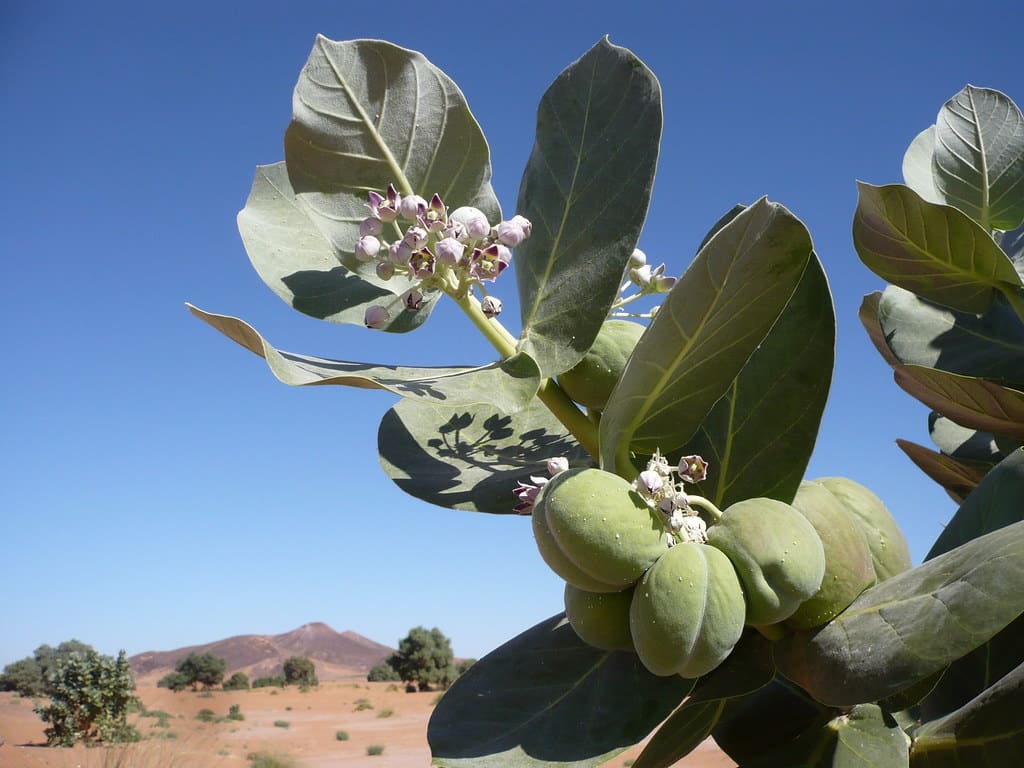
This shrub is native to Africa and is known for its toxic milky sap. This shrubby plant is frequently seen growing along Kenyan, Tanzanian, and Ugandan roadsides.
The sodom apple is a night-shade plant that is used by living things for both medicinal purposes and nourishment.
It produces fruits that resemble tomatoes, eggplants, and gooseberries in appearance.
These fruits begin to develop green when they are most poisonous, and then they fade to yellow and finally turn dark brown.
Contact with its liquid can cause skin irritation, and ingesting any plant part can be poisonous, leading to toxic symptoms such as nausea, vomiting, and abdominal pain.
15. African Poison Ivy
Dangerous plants in Africa? From its name, poison ivy is another Dangerous plant found in Africa, and it is present in different species.
Species of Rhus, including Rhus Toxicodendron and Rhus radicans, are found in Africa.
The characteristic look of this plant is that it has compound leaves with three alternate leaflets.
The stalk of the middle leaflet is much longer than the stalks of the two side leaflets. The edges are either smooth or coarsely toothed.
The surface of the leaves can either be glossy or dull. Let’s remember this plant is a dangerous one as they are said to contain urushiol resin.
This resin can cause severe skin irritation and allergic reactions in sensitive individuals upon contact, so they should be avoided as much as possible.
16. Giant Hogweed

Although native to the Caucasus region, giant hogweed has spread to various parts of the world, including Africa.
This plant is hazardous because any contact with the plant’s sap, particularly in sunlight, can cause severe burns and skin reactions.
Conclusion
There are different dangerous plants in Africa. Some have already been mentioned above, and some have not. Some still need to be discovered.
Thus, If you come across unfamiliar plants or suspect potential toxicity, it is best to consult local experts, such as botanists or horticulturists, for accurate identification and guidance on safety precautions.
It is also important to note that while these plants have potential dangers, they are part of the natural ecosystems in Africa and are not inherently threatening as long as they are treated with caution and respect.
Suppose you encounter unfamiliar plants or plant products during your travels in Africa, where potentially dangerous plants in Africa can be present.
In that case, it’s advisable to consult local experts or only direct contact if you have proper knowledge and guidance.
When exploring natural environments, it’s best to stay on designated paths, wear appropriate protective clothing, and consult local experts or guides for advice.




